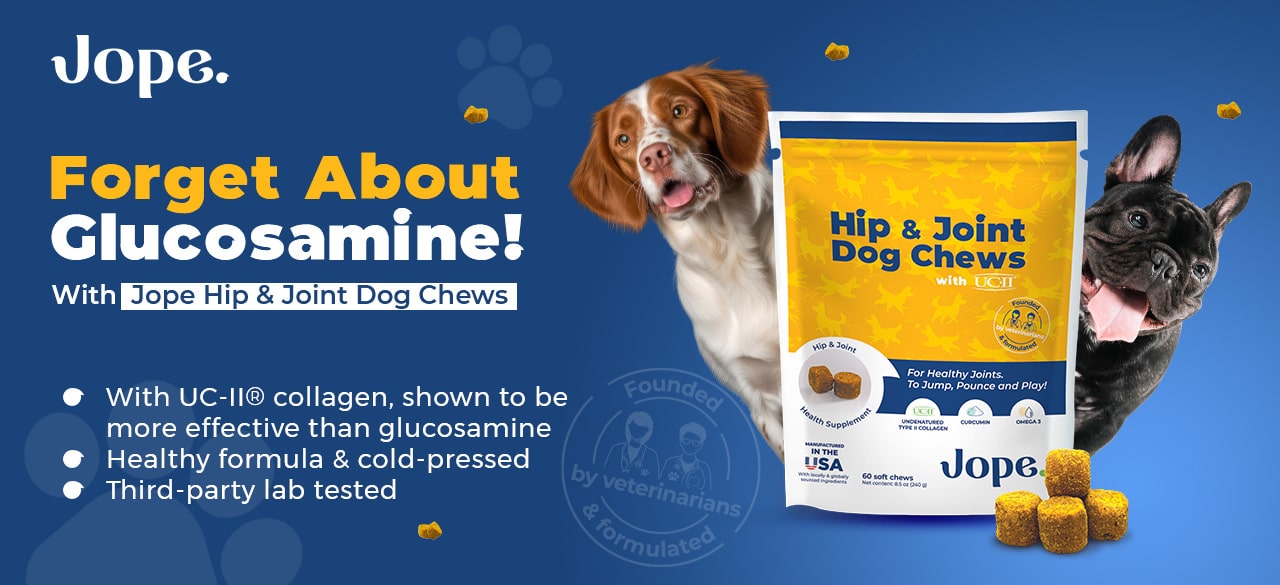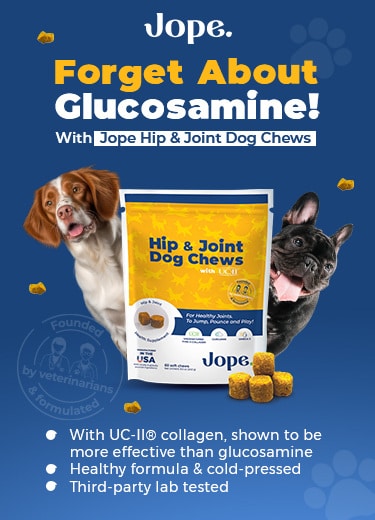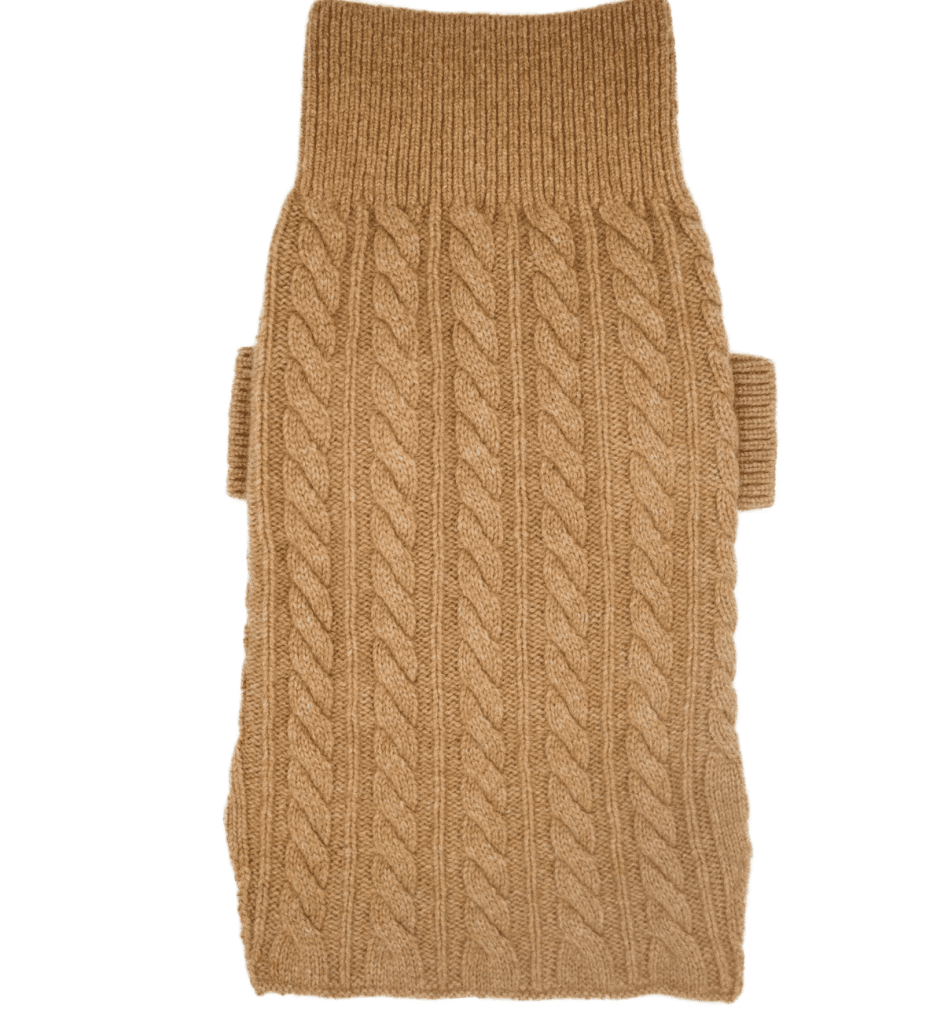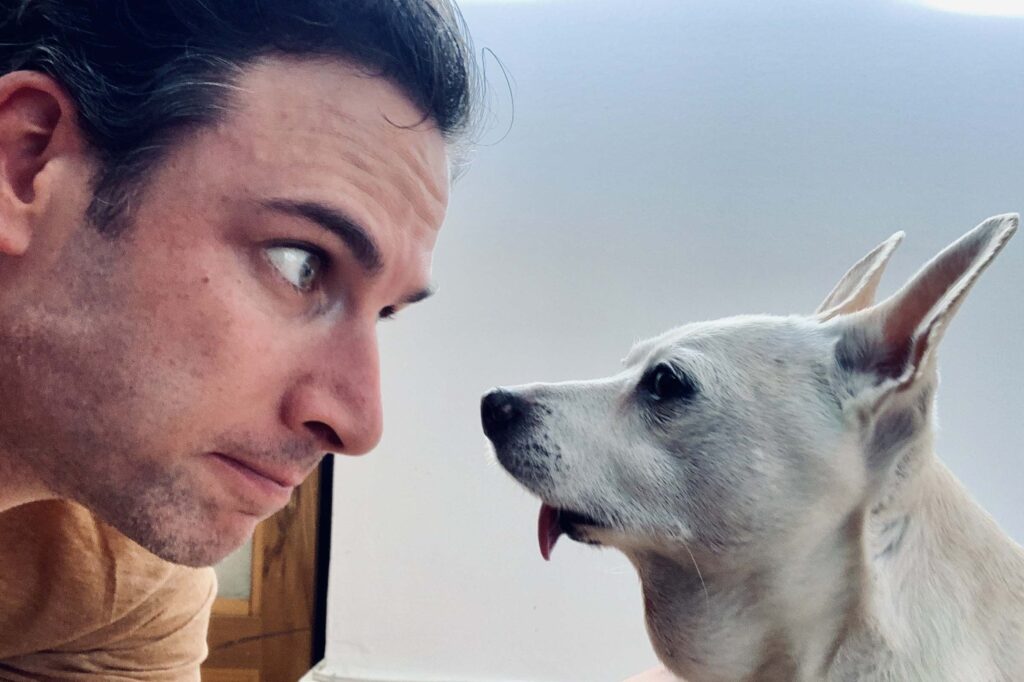We thank Dr. Gary Richter and his book publisher, Hay House, USA, for allowing Love, Dog to publish Chapter 3, Nutrition, in its entirety, from his latest book, Longevity For Dogs: A Holistic, Individualized Approach To Helping Your Canine Companion Live Longer — And Healthier. The book can be purchased here. You can learn more about Dr. Richter on his website, drgaryrichter.com. You can also follow Dr. Richter on Instagram @petvetexpert.
***
I’ve got good news: some of the most effective longevity treatments you can implement for your dog are low tech and easy to accomplish. When I talk with an owner about how to best care for their dog, regardless of whether the dog is healthy or has a serious medical condition, the discussion always (and I mean always) begins with nutrition.
Think of nutrition as you might think of car maintenance. Your car runs on gas, oil, and various other fluids, and it will have optimal performance when the correct fluids are in it. What happens if you use the wrong kinds? Possibly the car will still run, but not as well as it should. It will also be far more prone to internal damage and breakdown. The same is true for a biological system like your dog, except biology is actually much more forgiving than a car.
As simple as it sounds, longevity begins with putting the right fuel in the biological machine that is your pooch. As it turns out, nutrition is actually a big part of the problem— and solution—when it comes to dogs and longevity. When dogs are fed the wrong fuel, over time it causes their bodies to age faster and develop more medical problems than they otherwise would. And because the body takes longer to break down than your car, by the time medical problems are apparent, they have likely been adversely affecting the dog for years and years. Reversing that damage can be difficult and sometimes impossible. This is why, ideally, you should start your pet on an optimal diet from day one, or at least as soon as possible. In this chapter I will outline the most important nutrients, vitamins, and minerals to look for in food; which type of food preparation is best; and the right amount to feed your dog.
FROM WOLVES TO DOGS
When we think about ideal nutrition for dogs, it is best to start with an understanding of where your dog comes from. Depending on what paper you read, dogs have been domesticated for somewhere between 18,000 and 32,000 years.1 It all started with wolves, Canis lupus, who would scavenge the leftovers from our nomadic hunter ancestors. Over a very, very long time, there was an unintentional selection for specific traits in the wolves. The wolves who were less afraid of or less aggressive toward humans and could thrive on their leftover diet became the ones who survived and reproduced. Thus, they created subsequent generations of wolves who were progressively better adapted to living in harmony with people.
The big difference between a biological system like your furry friend and an inanimate machine is that biology has an innate healing ability and tendency toward health. In other words, your dog’s body wants to be healthy, and given half a chance, it will stay that way.
The ultimate result of this selection pressure over millennia is the modern dog, Canis familiaris. No matter if you own a Chihuahua or Great Dane, they are all the same species. Individual breeds came much later, as they were bred for specific traits to assist in different tasks. The similarities and differences between wolves and dogs are important because they govern what an ideal, longevity-promoting diet looks like.
There are three factors to consider when choosing the best nutrition for your dog:
1. What nutrients are in the food?
2. How are the ingredients processed?
3. How much food is optimal?
(If you are fascinated by this topic and want to learn more details about canine nutrition, as well as the triumphs
and failures of the modern pet-food industry, I would refer you to my first book, The Ultimate Pet Health Guide.)
1. WHAT NUTRIENTS ARE IN THE FOOD?
There are three sources of dietary energy (calories) in food: protein, fat, and carbohydrates. Literally, that is it; you can’t get calories from anything else. Sometimes referred to as macronutrients, proteins, fats, and carbohydrates (along with water) provide your dog’s body with the raw materials it needs to perform its necessary functions, like building muscle tissue, repairing a broken bone, or maintaining a normal immune system. In addition, micronutrients such as minerals and vitamins are also nutritionally necessary to promote health and longevity. Along with macronutrients, minerals such as calcium, magnesium, and zinc help make up the structure of tissues, while vitamins such as A, B, and C are needed to facilitate normal cellular functions and metabolism within the body.
The big difference between a biological system like your furry friend and an inanimate machine is that biology has an innate healing ability and tendency toward health. In other words, your dog’s body wants to be healthy, and given half a chance, it will stay that way. Conversely, if my car is broken, it is going to stay broken until someone (certainly not me!) fixes it. Even if I buy the needed parts for repair and put them next to the car, nothing is going to happen. In a biological system, on the other hand, often all that is needed is the raw materials and frequently the body will take it from there. But for our dogs, we want more than just survival. When there is a scarcity of one or more nutrients, vitamins, or minerals, the body has to make tough decisions—it has to triage. If you have ever been to a busy human or veterinary emergency room, you have likely experienced triage, with the medical staff prioritizing who is in the most need of care. It turns out a biological system is capable of internal triage.
Have you ever seen a malnourished dog? Of course the dog was shockingly underweight, but there is more to it than that. What did their hair coat look like? What was their energy level and demeanor? When faced with inadequate nutrients, the body has to prioritize, and first on the list is maintaining function of vital organs and the central nervous system. Everything else, like muscle mass, skin and coat, reproductive function, and energy to interact with the environment, takes a back seat. If you have spent time working at a shelter or watch rescue videos online, you have also seen what that dog looks like a few months after being rescued. Suddenly they have better muscle mass and are more interactive. They may even be unrecognizable because their coat is now full and healthy.
Basically, when there is scarcity, the body must plan for today. The prioritization list for micro- and macronutrients is lengthy, and for the body, limiting aging is going to be way, way down on the list; longevity is a future problem.2 This is the context within which to think about nutrition for longevity. We need to provide the body with enough nutrients not only to maintain critical body function and a normal life span but also to eliminate the need for triage and to ward off the hallmarks of aging.
Protein
When it comes to protein for dogs, the best and most efficient source is meat. While everything your dog eats doesn’t have to be animal based, their protein should be. Meat sources can potentially be from just about any animal, although I normally recommend sticking with mammals and birds. In a perfect world, fish would be an excellent protein source, but the oceans are not as clean as we would like them to be, and many fish contain toxins such as mercury and arsenic.3 The greatest benefit from fish is the fats such as EPA and DHA, which can be supplemented safely by other means—more on this in Chapter 6.
Protein from animal sources can come from muscle meat or organs such as heart, liver, and kidneys. In the United States and other Western cultures, we don’t eat a lot of organ meat, but much of the prized nutrition from animals comes from organs, which contain vitamins, minerals, and specific amino acids that may not be found in high quantities in muscle. Most animal predators in the wild eat the organs of their prey first, instinctively knowing where the best nutrition is.
Proteins to sidestep are meat meal and meat by-products. These ingredients are used as a low-cost way to increase the protein content of both kibble and canned diets. They are produced from the leftovers of meat production, and you have no way of knowing what is actually in them, leaving the quality and nutrient content of the protein a complete mystery. Feeding for your dog is about transparency, knowing exactly what fuel you are putting in them. Clearly, meat meal and by-products do not make the cut. The good news is, meal and by-products are easily avoided, as they are listed as such on the ingredients label.

We can’t get around the fact that there are some indirect problems to address when considering meat-based proteins. Meat production has a huge environmental impact in terms of greenhouse gases and water and land use.4 A study from 2017 reported that annual dog- and cat-food consumption was responsible for 64 million tons of greenhouse gases.5 That’s a hard number to ignore. While meat is certainly the most evolutionarily and biologically appropriate protein source for our pets, clearly it comes at a cost, and ultimately, environmental impacts are a longevity issue for all of us.
There is a promising solution on the horizon that allows our pets to “have their meat and eat it too”: cultured proteins. Cultured protein is meat that doesn’t come from an animal—sort of. The meat is produced from animal cells that are grown, or cultured, to produce meat. There is not an actual cow, pig, or chicken involved in the process, only the cells from one. It sounds a little freaky, but once perfected, cultured meat will have all the nutritional value of traditional meat without the environmental footprint or the need for millions of animals to be farmed. The ecological impact alone will be enormous.
For the time being, cultured meat is still in development. For humans, cultured protein will have to be not only nutritionally correct but also aesthetically pleasing. In other words, it’s going to have to look like a T-bone or no one will buy it. Our dogs, however, aren’t too hung up on what their food looks like, and pets will be the first big benefactors of environmentally conscious meat protein.
Fats
Fats have multiple roles in your dog’s body. They act as a source of stored energy; make up a large part of the skin, cell membranes, and nervous tissue; play a vital role in the absorption of other nutrients; and are involved in a wide array of metabolic processes. Your dog needs dietary fats to survive, thrive, and ensure a long and happy life.
Dietary fats can come from a variety of animal and plant sources. If you are feeding a fresh-food diet, the fat that accompanies the animal protein probably makes up the majority of what they need. And, unlike protein sources for dogs, plant-based fats can still be nutritionally beneficial. Seed or nut oils are commonly used in dog foods. When I designed recipes for dogs in The Ultimate Pet Health Guide, plant-based oils were part of most of the recipes.
Naturally, when people think about nutrition for their dog, they tend to transfer what they know (or think they know) about human nutrition, applying it to their choices of dog food. While the ideal nutrient profile for a person is somewhat different from a dog’s, a lot of the assumptions people might make about ideal nutrition carry over. When it comes to dietary fats, however, there are two important differences between us and our dogs.
As humans, we are frequently concerned about cholesterol. Diets high in cholesterol can lead to fatty deposits building up in our arteries, which over time can lead to a sudden loss of blood supply to the heart muscle (heart attack) or part of the brain (stroke). This is the reason why people are encouraged to avoid a lot of saturated fats that come from meat in favor of unsaturated fats from plant oils. The great news about your dog is that they don’t build up cholesterol in their blood vessels and almost never have heart attacks or strokes. So, your dog can eat saturated fats from meats and not have any ill effects.
The other big difference in fat metabolism between dogs and humans is that of omega-3 fatty acids. Omega-3s are often called essential fatty acids (EFAs) because the bodycannot make them and therefore they must come from dietary sources. The most important EFAs are eicosapentaenoic acid (EPA) and docosahexaenoic acid (DHA), which are derived from marine sources such as fish, krill, plankton, and algae. EPA and DHA play vital roles in the body, contributing to nervous system function, eye health, gut health, cardiovascular health, and more. This is why measuring omega fatty acid levels, as discussed in Chapter 2, is so critical to longevity. As humans, we can consume anotheromega-3, alpha-linolenic acid (ALA), from plant sources such as flax oil or hempseed oil and our bodies will convert the ALA to EPA and, to a lesser extent, DHA. Dogs are largely unable to do this, so their EPA and DHA must originate from marine sources. This is why so many dogs are deficient in omega-3 fatty acids.
But what about toxins? Because supplemental oils like fish oil are a purified product, they can be easily tested by third-party labs for contaminants such as heavy metals and other environmental toxins. Realize, though, that for all supplements there is no legal requirement for products to be tested or the results of the tests to be made public, so in Chapter 6 we’ll discuss what to look for in good-quality supplements.
Carbohydrates
Sugars, starches, and cellulose, all of which originate from plants, make up what we call carbohydrates. Carbs provide the body with an energy source (sugar) and, in the case of indigestible carbohydrates, fiber that aids in digestion. Whereas protein and fat are essential nutrients your dog cannot live without, carbohydrates occupy more of a gray zone. Your dog’s ancestors evolved eating a diet very high in protein and fat, along with a lesser proportion of carbohydrates. So, while dogs are able to utilize carbohydrates as a nutrient in ways their wolf ancestors cannot, they are not nutritionally required.
Our dogs’ ancestors consumed around 6 percent carbohydrates in their diet. The modern dog, who is evolutionarily adapted to a higher-carbohydrate diet, does just fine with a little more, about 15 percent.
For makers of kibble, carbohydrates are a filler and a source of calories that are cheaper than meat. Kibble is basically a baked good, and the common ingredient found in all baked goods—whether we are talking about bread, cake, or kibble—is carbohydrates. You can’t make baked goods without a carbohydrate source. Carb sources include grains, legumes (beans), potatoes, and so forth. So, when pet-food companies make the dough that ultimately becomes kibble, they use high levels of carbohydrates to increase nutrient density and ensure the kibble holds together.
Our dogs’ ancestors consumed around 6 percent carbohydrates in their diet. The modern dog, who is evolutionarily adapted to a higher-carbohydrate diet, does just fine with a little more, about 15 percent. That “baked good” dry dog food is usually between 45 and 75 percent. Canned food is significantly less, although like kibble it is highly processed—which we will discuss in the “Kibble and Canned Foods” section on page 70—and not optimal nutrition. To be clear, lots of dogs are out there eating high-carbohydrate kibble without any obvious negative effects. While it is true these foods will support your dog’s basic needs, these diets are not the optimal fuel for their biological function. High carbs can lead to weight gain, inflammatory conditions such as arthritis, and ultimately a shortened life span. So, a relatively small amount of dietary carbohydrates in the form of fruits, vegetables, and whole grains can be healthy and beneficial. When considering longevity, however, excess carbohydrates are not your dog’s friend.
The most visible carbohydrate-related controversy with dog food is the issue of grain-free diets. As mentioned, kibble is high in carbohydrates and frequently uses them as a filler to bulk up the food. In response to pushback on this practice, in the early 2000s pet-food manufacturers started marketing “grain-free” diets. These diets were supposed to be a healthier alternative to foods made with corn, rice, or wheat. Since some kind of carbohydrate has to be used to make kibble, grains were replaced with potatoes, legumes (beans), and other nongrain sources. The problem is, the companies didn’t test the foods in a research setting before they started selling them. They merely exchanged one carbohydratefor another.
Some years later, veterinarians started noticing a concerning trend. There was an uptick in a particular type of heart disease in dogs called dilated cardiomyopathy (DCM), which is frequently caused by a deficiency in theamino acid taurine. The increase in DCM was ultimately traced back to many of these grain-free diets.6 It is still not 100 percent clear if these diets were taurine deficient (as taurine is found in meat and not plant sources) or there was something about them that interfered with the absorption of taurine, but either way the end result was DCM. While the diets in question have mostly now been reformulated to prevent DCM, many people are wary of feeding a diet that is grain-free. But the DCM problem wasn’t due to a lack of grains; it was poor diet formulation and a lack of testing. The bottom line here is that dogs do not need grains in their diet to be healthy. Many of the fresh, whole-food diets I advocate for do not contain grains, and they are the healthiest diets you can feed your dog.
Water
Clearly, water is an important part of the diet for all living beings. When dogs consume water, they get it from their water bowl or their food. On some level, it doesn’t matter that much which bowl it comes from, and dogs are generally good at regulating their water needs. But nutritionally speaking, it is better if the water they consume comes from their food. Maintaining adequate hydration is critical to optimizing function of every system in the body. Even mild dehydration can put stress on the kidneys and affect blood flow, tissue oxygenation, nutrient absorption, and so forth. Every one of the original nine hallmarks of aging is negatively impacted by dehydration.
When a dog is eating a fresh-food diet (more on this in a later section), they are getting a lot of water with every bite they take. Water is necessary in order for food to be properly broken down, as well as aiding digestion and nutrient absorption, so having the water come along with the food is better all around. It may be that the water bowl is right next to your dog’s food bowl, but you can’t make them drink out of it. In fact, I hear from pet owners all the time, after they switch their dog to a high-water-content diet like fresh food, that their dog barely, if ever, drinks out of the water bowl. You can also add a little water to the food bowl to further increase water consumption. Bottom line: the more water your dog is getting in their food, the better.
There is also the question of water quality. Depending on where you live, your tap water may or may not be clean. We are all familiar with some of the life-threatening water-quality issues that have occurred in places like Flint, Michigan. What you may not be aware of is that tap water in many areas has been shown to be contaminated with pharmaceuticals, agricultural chemicals, and other toxins.7 Unless you live someplace where the water quality is exceptionally good, you might consider a water purification system like reverse osmosis because—sorry to say it—those countertop pitchers that filter water just don’t make the grade.
Reverse osmosis costs a little money, but this particular upgrade is really as much for the humans in the house as it is for the dogs. It is important for the reverse-osmosis system to have a remineralization feature to replace minerals that are removed during the purification process. Without this, over the long term, reverse-osmosis water can cause a loss of minerals in the body. I’ve had a reverse-osmosis water purifier under my kitchen sink for years, so all our water for drinking, cooking, and ice is filtered. After you have been drinking properly filtered water for a little while, you become very aware when you drink water that isn’t. You can literally taste the difference. I don’t know how to describe the flavor of poor-quality water other than that it tastes like chemicals, and it always makes me grateful that I get to go home and drink clean water. As an alternative to reverse osmosis, you could consider bottled water or a water-delivery service, but that can get expensive or be cumbersome. Ultimately, do what works best for you.
Vitamins and Minerals
Vitamins A, B, C, D, E, and K are organic compounds that must be present in the diet in order for normal body functions to be maintained. For example, vitamin A is needed to maintain normal vision, immune system function, and reproductive ability. In the previous chapter, we discussed how most dogs have deficient vitamin D levels and how that impacts the hallmarks of aging. Thinking again of internal triage, if a dog is facing a deficiency, such as a lack of vitamin D, their body has to decide where to allocate what little it has. Vitamin D is a critical part of calcium absorption, and it also reduces inflammation and helps protect the body from cancer. If we consider the body of the severely malnourished dog from before, it will use vitamin D to maintain the biological processes most necessary for life, such as proper immune system function. If vitamin D is deficient to the point where the body can’t properly absorb and maintain adequate calcium in the bones, they will lose their strength and rigidity. To be clear, there aren’t too many dogs out there who are so deficient in vitamin D that they have the “soft” bones associated with the clinical disease known as rickets. That doesn’t mean they aren’t deficient at all and might not still be suffering some ill effects such as poor immunity and a greater risk of cancer.
In addition to vitamins, minerals are inorganic compounds such as calcium, potassium, iron, and sodium. Along with protein, fat, carbs, and water, minerals are used to create and maintain every tissue in the body. Mineral deficiencies can lead to all manner of diseases. A lack of potassium, for example, will lead to a loss of muscle strength and coordination and, in severe cases, disturbances of heart rhythm. Magnesium, as we have previously discussed, is associated with accelerated aging and is another frequent deficiency for dogs. In short, vitamins and minerals are critical to maintaining the basic functions of life on a dayto- day basis and promote both life span and health span.
2. HOW ARE THE INGREDIENTS PROCESSED?
When it comes to longevity-focused nutrition, having the proper micro- and macronutrients is critical. But have you considered how those nutrients are prepared and presented to your dog? The basis of food preparation that focuses on health and longevity has everything to do with preserving the nutrition that Mother Nature put in there. In the last section we talked about the importance of proteins, fats, carbs, water, vitamins, and minerals individually, but in reality, that is not how nutrition works. Food sources are not exclusively protein, fat, or vitamins. Animal products, for example, are a combination of protein, fat, vitamins, minerals, and water. Lots of ingredients in one package.
Here is an indisputable fact: every animal species on the planet evolved eating a fresh, whole-foods diet. All their nutrition came from the whole foods they ate. Remember the metaphor of the car and how it is designed to function optimally with specific types of fuel and fluids? When it comes to animals—you and your dog included—we are designed to receive all our micro- and macronutrients through whole foods. The concept of food processing, preservation, and supplements is a human construct designed to provide convenience. There are still benefits associated with appropriate supplementation (see Chapter 6), but in a perfect world, all these vitamins and minerals would be introduced into the body through the whole foods eaten.
Kibble and Canned Foods
You don’t need a Ph.D. in nutrition to know that eating more fresh, whole foods and fewer processed foods is healthier. There certainly can be, and are, arguments about ideal diets such as keto, paleo, or vegan, but even at the fringes, no one is advocating for people to improve their health by eating large amounts of processed foods.
In 2020, over $40 billion was spent on pet food in the United States.8 Of that $40 billion, the sales of fresh-food diets make up only 4 percent.9 That means that 96 percent of the pet food sold in the United States is kibble and canned. Here’s the thing, kibble and canned food primarily exist for one simple reason (and—surprise—it’s the same reason processed foods are so prevalent in our diets): our convenience. Kibble and canned diets provide pet owners with a relatively inexpensive food option that won’t spoil and has no need for refrigeration. Let me be very clear: no matter what the pet-food companies tell you, highly processed foods like kibble and canned food are not ideal nutrition.
There are two big problems with processed dog foods. For starters, they are manufactured at very high temperature and, in the case of kibble, high pressure. The reason for this is simple: High-temperature and high-pressure processing is necessary if you are going to take fresh ingredients and make them shelf-stable. If you’ve accidentally overcooked vegetables so long that they turned into grayish-brown mush, beyond being unappetizing, a lot of the nutrition that was originally in those beautiful green veggies has been lost. It is the same with processed dog foods.
Most frequently what is lost are vitamins and other functional compounds such as enzymes. Pet-food companies often add vitamins back to the food after the processing, but the problem is that what is added back may not be as beneficial as what was lost. Naturally occurring vitamins are not so much a single molecule but a complex of phytonutrients. When we supplement a vitamin such as vitamin C, we are adding ascorbic acid, which is a portion of the vitamin C complex rather than the whole thing. As such, supplemented vitamins don’t always work as well as those found naturally in whole foods. Additionally, the loss of enzymes or other bioactive compounds is generally not accounted for at all.
The other main issue is what is gained during processing. Specifically, the high temperature and pressure lead to chemical changes in food that have the potential to cause great harm to your dog. Maillard reaction products (MRPs) and advanced glycation end products (AGEs) are formed during the cooking process. In fact, the browning that occurs with cooking is a result of MRP formation. Research has shown MRPs and AGEs contribute to oxidative stress, which causes inflammation, organ disease, and even cancer, affecting most of the hallmarks of aging.10, 11
Consumption of MRPs and AGEs in small amounts is probably fine (although less is better) for both humans and dogs. Here’s the rub: When researchers evaluated the amount of MRPs in processed pet foods, they found dogs consume 122 times more per day than the average human. The data for AGEs revealed a daily intake 38 times higher than humans.12 There is no other way to put it—this is not okay.
Frozen, Freeze-Dried, and Fresh
In the grand scheme of things, the best foods to feed your dog for longevity are balanced, fresh, whole foods. There are a few options to try. These days, in pet stores and online you can buy prepared frozen meals that are lightly cooked or raw. Freeze-dried raw diets are great too because the freeze-drying process occurs at low temperature and pressure, so we don’t have the nutrient loss and MRP/AGE issue to worry about. These options also have the benefit of a very high water content, assuming you are adding water to the freeze-dried food as directed. Alternatively, you can make food at home. The caveat for home-prepared meals is that it’s essential to work from a balanced recipe created by a nutritionist, such as the ones in The Ultimate Pet Health Guide. You cannot just put meat and veggies into a bowl and assume your dog is getting everything they need if you want them to live their best and longest life.

3. HOW MUCH FOOD IS OPTIMAL?
After learning that fresh, whole-food diets are a great way to support longevity, a lot of the dog owners I see in my practice are interested in how to implement them. Beyond the inquiries about specific brand or recipe recommendations, the most common question I am asked is, “How much do I feed?”
Consider Calorie Restriction
Research in multiple species indicates that the number of calories consumed per day has a direct impact on longevity.13 Specifically (although no one really wants to hear this), calorie restriction leads to an increased life span. There are a couple of reasons for this. The first is that calorie restriction upregulates (turns on) metabolic processes like autophagy that have a direct positive impact on the hallmarks of aging. Conversely, higher calorie intake leads to increased body fat, which is associated with inflammation and insulin resistance, both of which promote disease and aging.14 So, your dog should be eating enough calories to maintain optimal body function and nothing extra.
Both the health and the longevity benefits of calorie restriction are about how often your dog eats as much as their daily caloric intake. It turns out that many of the hallmarks of aging are positively affected during periods of not eating, or what is known as intermittent fasting.15 In dogs, the current research indicates those who eat once daily have “better cognitive function and lower odds of having gastrointestinal, dental, orthopedic, kidney/urinary, and liver/ pancreas disorders” compared to those eating more than once daily.16 To be clear, your dog would need the same amount of food as if they were eating twice daily, just fed in one meal rather than two. The time of day for the single meal is not super critical, although I would suggest an evening meal, as sometimes when dogs are lying down for hours on an empty stomach—as they do overnight—they can get acid reflux and tummy aches. Lastly, the benefits of once-daily eating require your dog to fast between those meals. That means few, if any, treats.
Calculate a Starting Point
I know you’re thinking, This is all very interesting, but how much should I feed my dog? Your starting point should be based on the recommendation for the food you are using. If it is store-bought, the package will have some guidelines. If you are preparing the food, make sure the recipe offers how many calories there are per cup of food. Then you can calculate your dog’s daily calorie requirement. The charts on pages 75 and 76 will help you determine your dog’s resting energy requirement (RER) and daily energy requirement (DER). Ultimately, DER is the number of calories per day to feed, at least to begin with.


You should also consider your dog’s body condition score (BCS). As shown in the chart on page 77, BCS is evaluated on a 9-point scale, with 5 being ideal. Below 5 is underweight, and above 5 is overweight. Given what we know about calorie restriction and longevity, I recommend shooting for a BCS of between 4.5 and 5. Regardless of whether you are determining the amount to feed from the recommendations on the package or are calculating DER, it is important to aim for your dog’s optimal body weight. In other words, if your dog weighs 60 pounds and has a BCS of 6, their optimal body weight is probably closer to 55 or maybe a little less. Calculate the amount to feed based on the weight they should be.

PRACTICAL CONSIDERATIONS
Feeding your dog for longevity requires consideration of food ingredients, preparation, amount, and frequency. There is no question that a properly balanced, fresh, whole food diet fed in the right amount gives your dog the best nutritional advantage for a long and healthy life, and in a vacuum, the chapter ends here. In the real world, however, there are other factors to consider. The biggest challenges pet owners face when it comes to nutrition for their dog (or themselves) are the age-old issues of time and money.
Fresh-food diets necessarily require a commitment of either time or money, although frequently both are involved. Fresh food, regardless of whether it is for humans or dogs, is always going to be more expensive than processed foods. This is why nutrition-related illnesses are so common in people who are economically disadvantaged. Calories from processed foods are cheaper and easier to obtain.
If you own one small to medium dog, the price of premade fresh food may be within reach. If you own one or more large dogs, you could easily find yourself spending somewhere north of $500 per month on frozen cooked or raw foods. Let’s be honest, for most of us, that is going to be tough to sustain. On the flip side, if you make food at home, there is a time commitment, but you can purchase the individual ingredients yourself and the costs per meal will be significantly lower. In addition, you have control over sourcing ingredients, such as finding a good butcher who can save cuts of meat that are great for dogs but maybe don’t sell well for humans. Trimmings from high-quality cuts of meat can be both affordable and nutritious. If organic is within the budget, I highly encourage it. That said, I will choose a conventional fresh-food diet over organic kibble any day.
The bottom line is, whatever you do regarding feeding your dog, you have to go with a plan that is sustainable for your life. If you love spending time in the kitchen, it may be that making food is for you. If you don’t even know how to turn on your stove, perhaps not. You can also make as much food as you are able in one go and then portion and freeze. If you can make a couple of weeks’ (or more) worth of food all at once, this cuts down your time in the kitchen drastically. There is certainly no need to be doing food prep multiple times per week.
Or you might consider feeding a combination of store-bought fresh food and homemade. And if feeding all fresh food is too much of a financial challenge, feed as much as you can afford and supplement the rest with high-quality canned food or kibble. Read ingredients lists to make sure they contain real meat (not meat meal or by-products). For dry foods, make sure that they are relatively low in carbohydrates. There are also some air-dried kibbles out there that are better than the more conventionally produced kibble. If it is air-dried, you will see it prominently listed on the packaging, as this is a selling point for the company. At the end of the day, we all have to live in the real world, and reconsidering what you feed your dog isn’t an all-or-nothing proposition.
One final note regarding diets: variety is a plus. Dogs evolved to eat a spectrum of different proteins, fats, and carbs. Feeding them the same ingredients for years may have detrimental effects, such as the development of food sensitivities. Instead, I highly recommend rotating through different recipes over time. Depending on how sensitive your dog is to dietary changes, you can do this as often as daily or as infrequently as several times per year. If your dog is sensitive to food changes, make sure to gradually transition from one diet to the next over a week or so.
* * *
While nutrition is unquestionably “step one” when it comes to longevity, exercise and lifestyle come in a close second. In the next chapter, we will discover how to build on our foundation of nutrition by exploring ways to create a longevity-promoting environment at home for your furry friends.
Endnotes
- E. Yong, “A new origin story for dogs: the first domesticated animals may have been tamed
twice,” The Atlantic, June 2, 2016, https://www.theatlantic.com/science/archive/2016/06/the-origin-of-
dogs/484976. - B. N. Ames, “Low micronutrient intake may accelerate the degenerative diseases of aging
through allocation of scarce micronutrients by triage,” Proceedings of the National Academy of Sciences
103, no. 47 (November 21, 2006): 17589–17594, https://www.pnas.org/doi/10.1073/pnas.0608757103. - C. Copat et al., “Heavy metals concentrations in fish and shellfish from eastern
Mediterranean Sea: consumption advisories,” Food and Chemical Toxicology 53 (March 2013):
33–37, https://doi.org/10.1016/j.fct.2012.11.038. - Z. Petrovic et al., “Meat production and consumption: environmental consequences,”
Procedia Food Science 5 (2015): 235–38,
https://www.sciencedirect.com/science/article/pii/S2211601X15001315. - G. S. Okin, “Environmental impacts of food consumption by dogs and cats,” PLoS One 12,
no. 8 (2017): e0181301, https://journals.plos.org/plosone/article?id=10.1371/journal.pone.0181301. - J. L. Kaplan et al., “Taurine deficiency and dilated cardiomyopathy in golden retrievers fed
commercial diets,” PLoS One 13, no. 12 (December 13, 2018): e0209112,
https://doi.org/10.1371/journal.pone.0209112. - T. Luntz, “U.S. drinking water widely contaminated,” Scientific American,
December 14, 2009, https://www.scientificamerican.com/article/tap-drinking-water-
contaminants-pollutants. - E. Bedford, “U.S. pet market sales by category 2018–2021,” Statista,
September 8, 2022, https://www.statista.com/statistics/253983/pet-market-sales-in-the-
us-by-category. - T. Wall, “Decade-long fresh, raw pet food sales growth trend,” PetFoodIndustry.com, December
17, 2021, https://www.petfoodindustry.com/articles/10892-decade-long-fresh-raw-pet-food-sales-growth-
trend?v=preview#:~:text=In%20Packaged%20Facts’%20most%20recent,U.S.%20pet%20food%20reta
il%20sales. - N. Tamanna and N. Mahmood, “Food processing and Maillard reaction products: effect on human
health and nutrition,” International Journal of Food Science 3 (2015): 1–6,
https://doi.org/10.1155/2015/526762. - D. Schröter and A. Höhn, “Role of advanced glycation end products in carcinogenesis and
their therapeutic implications,” Current Pharmaceutical Design 24, no. 44 (2018): 5245–51,
https://doi.org/10.2174/1381612825666190130145549. - G. Richter, The Ultimate Pet Health Guide: Breakthrough Nutrition and Integrative Care for Dogs
and Cats (Carlsbad, CA: Hay House, 2017), 38. - R. Weindruch and R. S. Sohal, “Seminars in medicine of the Beth Israel Deaconess Medical Center.
Caloric intake and aging,” New England Journal of Medicine 337, no. 14 (1997): 986–94,
https://doi.org/10.1056/NEJM199710023371407. - V. Adams et al., “Exceptional longevity and potential determinants of successful ageing in a cohort of
39 Labrador retrievers: results of a prospective longitudinal study,” Acta veterinaria Scandinavica 58, no.
1 (May 11, 2016), https://doi.org/10.1186/s13028-016-0206-7. - A. K. Shetty et al., “Emerging anti-aging strategies—scientific basis and efficacy,” Aging and Disease
9, no. 6 (December 4, 2018): 1165–84, https://www.ncbi.nlm.nih.gov/pmc/articles/PMC6284760. - E. E. Bray et al., “Once-daily feeding is associated with better health in companion dogs: results from
the Dog Aging Project,” GeroScience 44 (April 28, 2022): 1779–90, https://doi.org/10.1007/s11357-022-
00575-7.
subscription
LOVE, DOG















